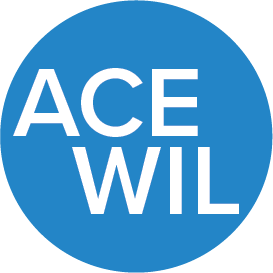As a small business owner, you may wonder whether hiring a student is worthwhile compared to hiring a regular employee. Although you’ll have to invest your time to recruit and onboard them, co-op and work-integrated learning students bring the latest skills, new perspectives, and plenty of enthusiasm to the workplace. In this article, learn how to hire a post-secondary student and how they can help your business grow.
Step 1 – Determine Your Needs
Do you have a short-term project but can’t take on anything else? Have you just landed a contract and need to bring on someone to assist with the additional workload? Are you short-staffed and need to hire someone to fill a gap in the workplace?
Think about the work you want to accomplish and start drafting a job description. List the duties of the student as well as the skills you’re looking for in a successful candidate. Also, be sure to include some background information about your organization.
Duration of Work Placement
Co-op students generally start their four or eight-month full-time work terms in January, May, or September. An intern or practicum student may be available part-time or for a shorter duration at a particular time of the year.
Payment
Another consideration is how much the student will be paid. Consult the Salary Look-up Tool for details on co-op payment. You may also be eligible for Federal and BC funding resources, like grants and wage subsidies. For more information take a look at the Association for Co-operative Education and Work-Integrated Learning BC/Yukon’s (ACE-WIL) Get Funding page.
Step 2 – Hire a Student
When you’ve completed your job posting, submit it to the ACE-WIL job portal. You can select the post-secondary institutions and programs best suited for your position, and the portal will automatically send them your posting.
Institutions will collect applications and send them to you. Some may even be able to help coordinate interviews, depending on what program you’re looking to hire a student from. After you’ve interviewed your candidates, be prepared to make an offer fairly quickly. Once the student has accepted your offer, determine the start and end dates for employment, and collect any HR-related information to get them on payroll.
Step 3 – Determine Onboarding Logistics
Now that you know who will be joining your team, and when, you’ll have to determine the onboarding logistics. The hiring process for a student is the same as hiring a regular employee, with a few more considerations. These include:
- When working on-site, will you have a computer, desk, or office space set up for them?
- If the student will be working from home, do you have a laptop and any other necessary devices available?
- Will they need access to a phone?
- Will they need access to a vehicle?
- Will you have a work email address set up for them?
- Are there any security processes that need to be taken care of ahead of time?
- Has payroll been notified about your new hire?
Step 4 – Select a Supervisor
Determine who will supervise the student and have them meet regularly. They should be prepared to offer guidance to the student and answer any questions they may have. Because this is an educational program, the supervisor should also be prepared to offer feedback. Whether at regular one-on-one meetings, a midterm check-in with an advisor from the student’s school, and/or completing a final evaluation required by the school
Figure out what the first few days on the job will look like. Consider:
- Who will meet with the student to get them settled and introduce them to their new colleagues?
- Will the student get started on their tasks right away or will they be required to do research to get them up-to-speed beforehand?
- Keep in mind that in feedback received from previous employers, students often complete their tasks faster than anticipated. Will you have extra tasks on hand, just in case?
Reap the Benefits
Hiring a student can provide both short- and long-term benefits. Students are eager to learn, bring a fresh perspective and energy to your organization, and can be more cost-effective than hiring contractors or going through a temp agency.
Many businesses also use these student placements as recruiting tools. You’ll have experience working with the student and can evaluate their performance before committing to hiring them into a permanent position. Some businesses also decide to keep a student on part-time until they graduate.
Working with students provides you with the flexibility you need as a small business and helps build a stronger future workforce for BC. For more information and resources, visit the ACE-WIL website.
Small Business BC is Here to Help
SBBC is a non-profit resource centre for BC-based small businesses. Whatever your idea of success is, we’re here to provide holistic support and resources at every step of the journey. Check out our range of business webinars, on-demand E-Learning Education, our Talk to an Expert Advisories, or browse our business articles.
